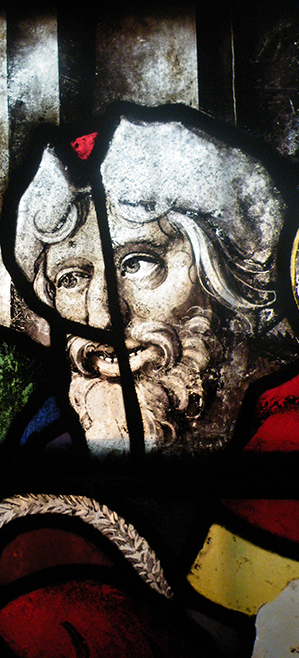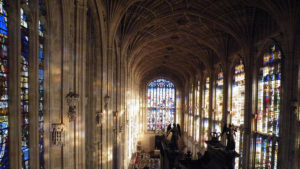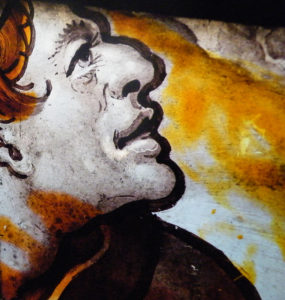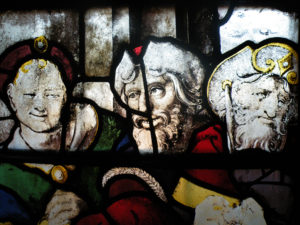
King’s College Chapel, Cambridge
Medieval
A full condition survey of all the stained glass, leading to recommendations for a long term conservation strategy, in-situ cleaning of the glass, and in-situ remedial repairs to the ironwork that supports the stained glass panels.
Arguably the most beautiful building in England, the lofty heights have an aura of architectural power. A Renaissance masterpiece; the 16th century stained glass that fills most of the 26 large windows was executed over a lengthy period. Initially by a number of skilled glaziers from the continent, including Barnard Flower and Galyon Hone, who settled in Southwark, London, and benefitted from Royal privilege, and latterly by native English glaziers, who seamlessly continued the new and foreign painting style.
The comprehensive condition survey was carried out over a 2 year period by HWG. This included close examination of the painted detail, and a detailed diagrammatic survey of this and other aspects (corrosion, glass condition and type, iconography, graffiti, ferramenta, lead types etc…) The survey was based on a holistic approach, paying proper respect to the chapel fabric, and not treating the stained glass in isolation. Archival records were examined to establish previous restoration campaigns, ( verified by examination of the lead types and mill marks ) historic heating methods and wartime storage locations. The completed work was presented to the client in both hard copy and digital format. Although the report found no immediate need for a large scale repair programme, it highlighted the probability of major works within the next 20 or 30 years.
There were potentially serious structural defects as a result of expansion of the supporting iron ferramenta where it entered into the stone reveals, causing severe rust-jacking. It had previously been fixed with a hard cement mortar, and therefore remedial work was carried out to carefully expose bar ends, treat with rust inhibiting paint system, and re-point with a more sympathetic lime mortar.





